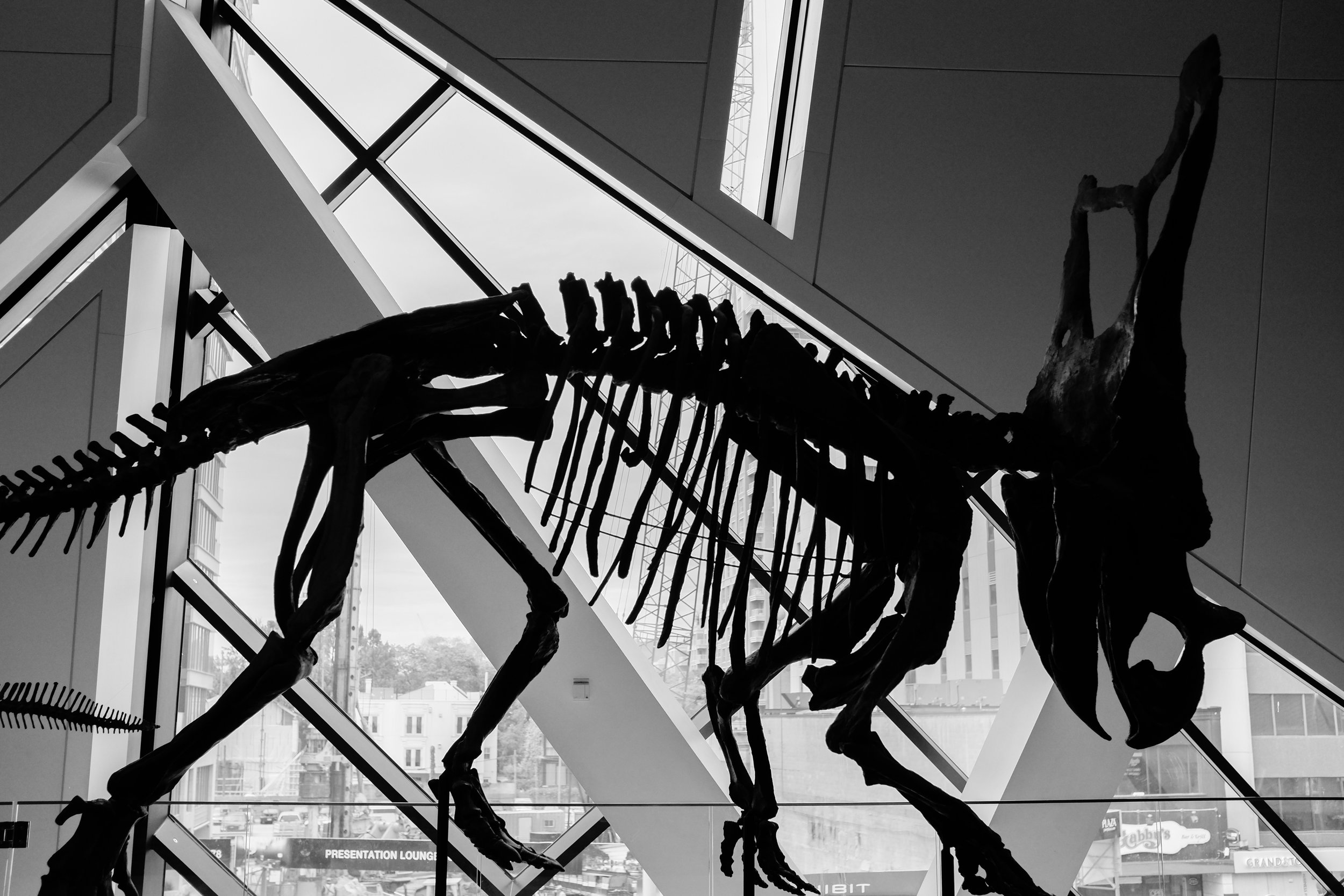At the Corning Museum of Glass in Corning, N.Y., the galleries offer plenty of photographic opportunities. Here, I was drawn to the monochrome look of the background and the contrast with the color and form of the glass. I also like how the shapes created by the silhouettes of museum-goers interact with the curves of the glass. Fujifilm X-Pro2 with a 50mm F2.0 lens, 1/500 @f5.0, ISO 400.
There are many reasons to visit museums, art, history or otherwise, but I find that for me, it's all about being inspired while finding inspiration and at the same time making photographs. And while I love when museums feature photography exhibits, inspiration can come from all kinds of exhibits, such as paintings, mixed media, or the building itself.
Below are five tips to keep in mind when photographing in museums.
1. If you plan on taking your camera to the museum, make sure they allow photography. I find that most museums today do allow photography with a few caveats. No flash photography, tripods or video are pretty standard. Occasionally, some exhibits will be clearly labeled as off limits to photography. I've also have seen where cell phone use is banned, but have never seen it enforced.
I use the pop of color and door frame to draw you into this photo taken at the National Gallery of Canada in Ottawa. The guard in the doorframe breaks up the scene and adds some life. Fujifilm X-Pro2 with a 50mm F2.0 lens, 1/40 @f2.8, ISO 320.
2. Don't just walk around photographing artwork just to duplicate the artwork. Take the time to see the art in its environment. Or how one piece plays off other pieces in the space. Or does the space or room itself become the focal point of your photograph?
The Royal Ontario Museum located in Toronto, Canada, has a great mixture of exhibits located in a wonderfully designed building. In this photo, I used the straight lines of the windows to contrast with the curved lines of the dinosaur. Choosing to present this as monochrome further emphasizes the patterns. Fujifilm X100S, 1/1250 @f2.8, ISO 800.
3. Be courteous to other museum goers. Don't plant yourself in a way that puts you in a spot which blocks others from viewing exhibits. I like to keep moving until I see something that might make a nice photograph and if taking the photo at that time would impede on others experiences, I'll just take note and circle back. Also be mindful of shutter noise. If your camera has the capability of a silent shutter, this is the time to use it. Otherwise, just be mindful.
Museums typically have some great natural light and I think in this photo that's what gives it a light airy feel and compliments the art. People can bring a museum to life and like to include them whenever possible, however, I rarely make them the center of attention. It's for that reason that I often use silhouettes or obscure faces. Fujifilm X-Pro2 with a 50mm F2.0 lens, 1/1000 @f2.0, ISO 320.
4. Sometimes I like to find a bench or seat and just wait until a scene comes together. Patience is key. If you sit somewhere long enough you become part of the scene and others won't even notice you. If you are standing in one place with a camera, people may avoid you, not wanted to get in the way of what they perceive you are photographing. Stepping outside the gallery for a few minutes and then returning can reset the natural mood of others.
What caught my eye in this image at the Royal Ontario Museum located in Toronto, Canada, was the rhino behind glass as if it's guarding this gallery, but somehow being held back. Fujifilm X100S, 1/8 @f4.0, ISO 800.
5. Take the time to enjoy your visit as well. Remember the inspiration part of this post? Step back, put down the camera and enjoy the art and exhibits around you. Many times you can also meet other like minded people and strike up a conversation.






















